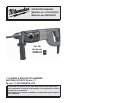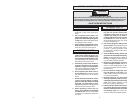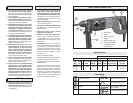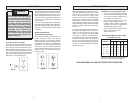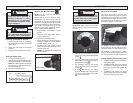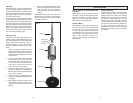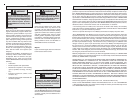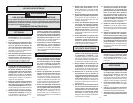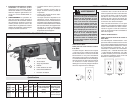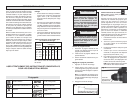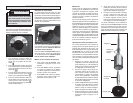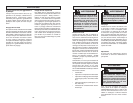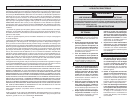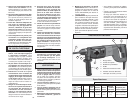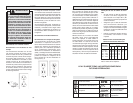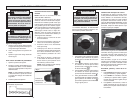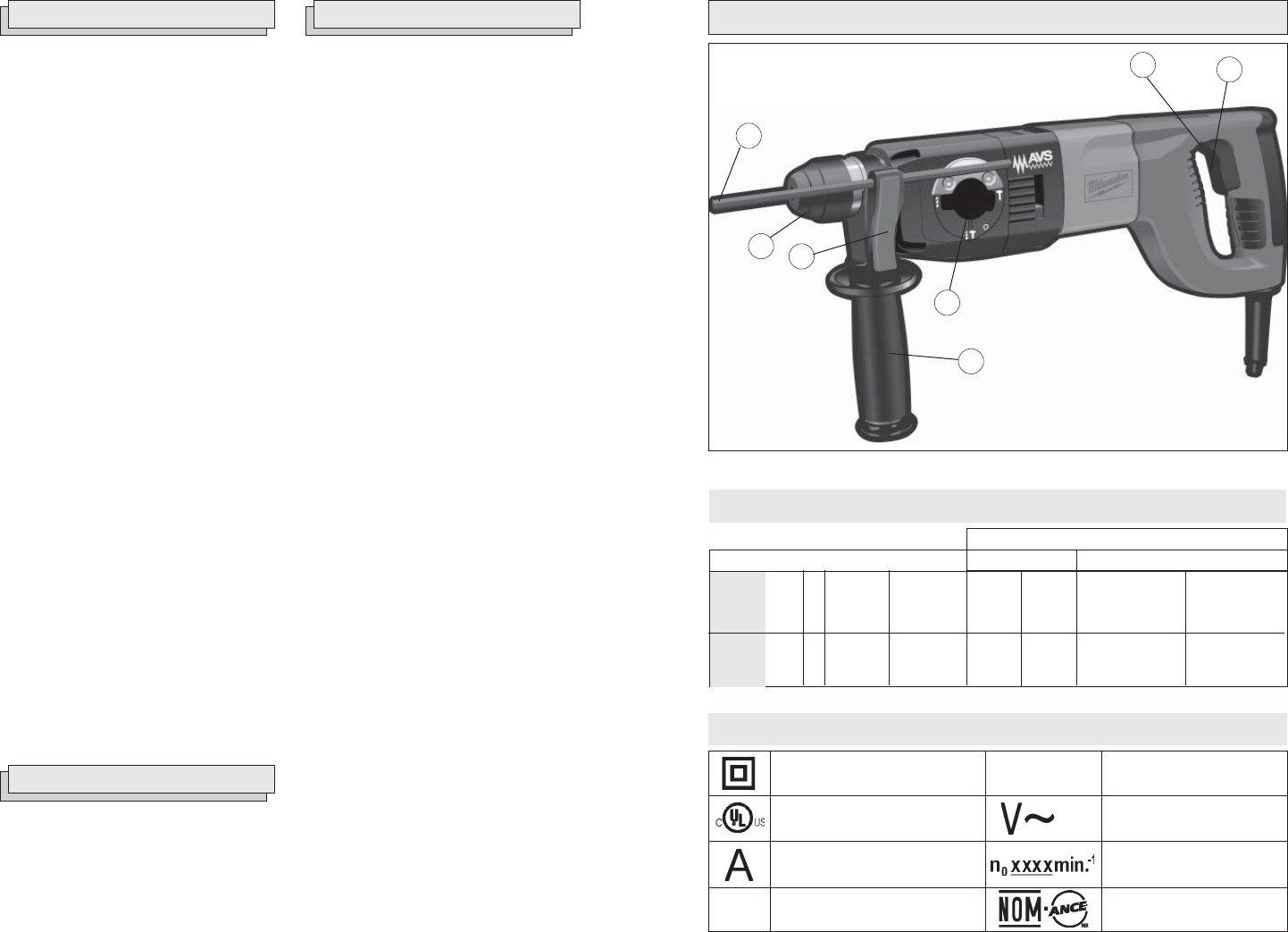
4 5
POWER TOOL USE AND CARE
16. Do not force the power tool. Use the
correct power tool for your applica-
tion. The correct power tool will do the
job better and safer at the rate for which
it was designed.
17. Do not use the power tool if the switch
does not turn it on and off. Any power tool
that cannot be controlled with the switch is
dangerous and must be repaired.
18. Disconnect the plug from the power
source and/or the battery pack from
the power tool before making any
adjustments, changing accessories,
or storing power tools. Such preven-
tive safety measures reduce the risk of
starting the tool accidentally.
19. Store idle power tools out of the reach
of children and do not allow persons
unfamiliar with the power tools or
these instructions to operate power
tools. Power tools are dangerous in the
hands of untrained users.
20. Maintain power tools. Check for
misalignment or binding of moving
parts, breakage of parts and any
other condition that may affect the
power tool's operation. If damaged,
have the power tool repaired before
use. Many accidents are caused by
poorly maintained power tools.
21. Keep cutting tools sharp and clean.
Properly maintained cutting tools with
sharp cutting edges are less likely to
bind and are easier to control.
22. Use the power tool, accessories and
tool bits etc., in accordance with
these instructions and in the manner
intended for the particular type of
power tool, taking into account the
working conditions and the work to
be performed. Use of the power tool for
operations different from those intended
could result in a hazardous situation.
SERVICE
23. Have your power tool serviced by a
qualifi ed repair person using only
identical replacement parts. This will
ensure that the safety of the power tool
is maintained.
SPECIFIC SAFETY RULES
1. Hold power tools by insulated grip-
ping surfaces when performing an
operation where the cutting tool may
contact hidden wiring or its own cord.
Contact with a “live” wire will make ex-
posed metal parts of the tool “live” and
shock the operator.
2. Wear ear protectors. Exposure to noise
can cause hearing loss.
3. Use auxiliary handles supplied with
the tool. Loss of control can cause
personal injury.
4. Keep hands away from all cutting
edges and moving parts.
5. Maintain labels and nameplates.
These carry important information.
If unreadable or missing, contact a
MILWAUKEE service facility for a free
replacement.
6. WARNING! Some dust created by
power sanding, sawing, grinding, drill-
ing, and other construction activities
contains chemicals known to cause
cancer, birth defects or other reproduc-
tive harm. Some examples of these
chemicals are:
• lead from lead-based paint
• crystalline silica from bricks and cement
and other masonry products, and
• arsenic and chromium from chemically-
treated lumber.
Your risk from these exposures varies,
depending on how often you do this
type of work. To reduce your exposure
to these chemicals: work in a well ven-
tilated area, and work with approved
safety equipment, such as those dust
masks that are specially designed to
fi lter out microscopic particles.
FUNCTIONAL DESCRIPTION
1. Side handle
2. Clamp
3. Depth gauge rod
4. Trigger
5. Mode selector lever
6. SDS Plus bit holder
7. Forward/Reverse
Control switch
5
1
4
6
3
2
7
Mexican Approvals Marking
BPM
Blows per Minute (BPM)
Double Insulated
Symbology
Underwriters Laboratories, Inc.
No Load Revolutions per
Minute (RPM)
Amps
Volts Alternating Current
Specifi cations
Rotary Hammer
No Load
RPM
0 - 1050
No Load
Blows per
Minute
0 - 5900
Cat.
No.
5369-21
Twist
Drill Bit
(Wood)
1-1/2"
Carbide Tipped
Percussion
Bit (concrete)
1"
Drill Only
Tool
Capacities
Volts
AC
120
A
7.5
Twist
Drill Bit
(Steel)
5/8"
Thin Wall
Core Bit
3-1/2" concrete
4" brick



